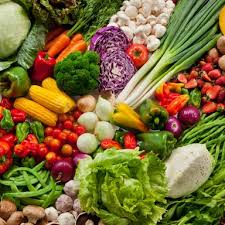Se-tenant: Phonetic Symbols (Series 4) (Taiwan (Republic of China) 2024)
Phonetic Symbols (Series 4) (Taiwan (Republic of China) 2024)
27 March (Taiwan (Republic of China) ) within release Phonetic Symbols (Series 4) (2024) goes into circulation Se-tenant Phonetic Symbols (Series 4) face value 10*6 Taiwanese new dollar
| Se-tenant Phonetic Symbols (Series 4) in catalogues | |
|---|---|
| Colnect codes: | Col: TW 2024.03.27-01 |
Se-tenant is horizontal format.
Issued in panes containing two se-tenant blocks of 10Also in the issue Phonetic Symbols (Series 4) (2024):
- Se-tenant - Phonetic Symbols (Series 4) face value 10*6;
- Full Pane - Phonetic Symbols (Series 4) face value 20*6;
- Stamp - ㄏㄠˇ and Mail Boxes face value 6;
- Stamp - ㄐ一ˊ and Stamp Collecting face value 6;
- Stamp - ㄠand Bridge over Lake Jiuqu face value 6;
- Stamp - ㄡand Watermelon face value 6;
- Stamp - ㄢand Fortress of Dawulun face value 6;
- Stamp - ㄣand Statue of Wind Lion Lord face value 6;
- Stamp - ㄤand Cantaloupe face value 6;
- Stamp - ㄥand Onion face value 6;
- Stamp - ㄦ and Locomotives face value 6;
- Stamp - ㄧㄡˊ and Mail Truck face value 6;
Se-tenant Phonetic Symbols (Series 4) it reflects the thematic directions:
A bridge is a structure built to span physical obstacles without closing the way underneath such as a body of water, valley, or road, for the purpose of providing passage over the obstacle. There are many different designs that each serve a particular purpose and apply to different situations. Designs of bridges vary depending on the function of the bridge, the nature of the terrain where the bridge is constructed and anchored, the material used to make it, and the funds available to build it.
In botany, a berry is a fleshy fruit without a drupe (pit) produced from a single flower containing one ovary. Berries so defined include grapes, currants, and tomatoes, as well as cucumbers, eggplants (aubergines), persimmons and bananas, but exclude certain fruits that meet the culinary definition of berries, such as strawberries and raspberries. The berry is the most common type of fleshy fruit in which the entire outer layer of the ovary wall ripens into a potentially edible "pericarp". Berries may be formed from one or more carpels from the same flower (i.e. from a simple or a compound ovary).: 291 The seeds are usually embedded in the fleshy interior of the ovary, but there are some non-fleshy exceptions, such as Capsicum species, with air rather than pulp around their seeds.
Language is a structured system of communication that consists of grammar and vocabulary. It is the primary means by which humans convey meaning, both in spoken and written forms, and may also be conveyed through sign languages. Human language is characterized by its cultural and historical diversity, with significant variations observed between cultures and across time. Human languages possess the properties of productivity and displacement, which enable the creation of an infinite number of sentences, and the ability to refer to objects, events, and ideas that are not immediately present in the discourse. The use of human language relies on social convention and is acquired through learning.
A locomotive is a rail transport vehicle that provides the motive power for a train. If a locomotive is capable of carrying a payload, it is usually rather referred to as a multiple unit, motor coach, railcar or power car; the use of these self-propelled vehicles is increasingly common for passenger trains, but rare for freight trains.
A map is a symbolic depiction emphasizing relationships between elements of some space, such as objects, regions, or themes. Many maps are static, fixed to paper or some other durable medium, while others are dynamic or interactive. Although most commonly used to depict geography, maps may represent any space, real or imagined, without regard to context or scale, such as in brain mapping, DNA mapping, or computer network topology mapping. The space being mapped may be two dimensional, such as the surface of the earth, three dimensional, such as the interior of the earth, or even more abstract spaces of any dimension, such as arise in modeling phenomena having many independent variables. Although the earliest maps known are of the heavens, geographic maps of territory have a very long tradition and exist from ancient times. The word "map" comes from the medieval Latin Mappa mundi, wherein mappa meant napkin or cloth and mundi the world. Thus, "map" became the shortened term referring to a two-dimensional representation of the surface of the world.
Vegetables are parts of plants that are consumed by humans or other animals as food. The original meaning is still commonly used and is applied to plants collectively to refer to all edible plant matter, including the flowers, fruits, stems, leaves, roots, and seeds. An alternative definition of the term is applied somewhat arbitrarily, often by culinary and cultural tradition. It may exclude foods derived from some plants that are fruits, flowers, nuts, and cereal grains, but include savoury fruits such as tomatoes and courgettes, flowers such as broccoli, and seeds such as pulses.






